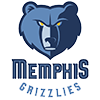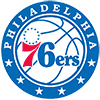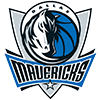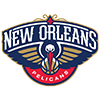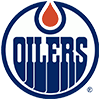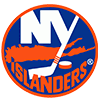THE U.S. OPEN
Purse: $20M
Winner's Share: $4M
FedEx Cup Points: 750 to the Winner
Location: Oakmont, Penn.
Course: Oakmont Country Club
Yardage: 7,342
Par: 70
2024 champion: Bryson DeChambeau (Pinehurst No. 2)
Tournament Preview
The 125th U.S. Open brings together two of the most powerful forces in golf. Neither of them is used to losing. Not many people will remember, but they actually met once before, almost a decade ago, though under far different circumstances.
Now, the best golfer in the world, Scottie Scheffler -- who leads off RotoWire's 2025 U.S. Open Power Rankings -- will square off against what is considered by many to be the absolute hardest golf course in the world. Mighty Oakmont.
There are always a series of fascinating storylines entering a major golf tournament. Usually, though, it's player vs. player or something along those lines. But now Scheffler has become so dominant, winning three of his past four starts, including the PGA Championship, to open up a Tigeresque gap on world No. 2 Rory McIlroy, that he's now playing against himself, playing against history. And, this week, playing against Oakmont.
This is the record 10th time that Oakmont will play host to the U.S. Open. In the two mot recent editions, in 2007 and 2016, Angel Cabrera won at 5-over and then Dustin Johnson at 4-under, which was three shots clear of second place. It was in that 2016 Open that a 19-year-old Scheffler made his major debut. He missed the cut.
Scheffler has come a long way since then. As for Oakmont, well, it's still the same beast.
What has made Scheffler's cavernous distance between him and McIlroy in the world rankings all the more unfathomable is that in the past three months, McIlroy has won two of the five biggest golf tournaments in the world, the Masters and THE PLAYERS Championship.
Of course, Scheffler does not have to actually beat Oakmont; he just has to beat the other 155 golfers in this field. But seeing how the best golfer of this generation tackles this 18-hole brute may be the most compelling drama all week.
There are other storylines, though Scheffler's dominance has reduced the number of them and their potential impact.
- McIlroy. What's left for him to accomplish? Other than piling up more major titles to enhance his historical place in the sport, not much. He just completed the career grand slam, becoming only the sixth man to do so. If Scheffler were to win this U.S. Open, he would be three-fourths of the way to becoming the seventh. And then wouldn't that give McIlroy something else to accomplish next month at the Open Championship -- not only preventing Scheffler from joining the grand-slam club, albeit surely temporarily, but preventing him from doing so on the Northern Irishman's home soil at Royal Portrush.
- Bryson DeChambeau. Oh, yeah, the defending champion, the one who crushed the heart and soul of McIlroy a year ago at Pinehurst No. 2. DeChambeau has finished in the top-6 in five of the past six majors. No one else, not Scheffler and not McIlroy, can say that. All but last year's U.S. Open has ended in disappointment. Two months ago, DeChambeau was beaten by McIlroy on Sunday at Augusta (he tied for fifth)) and last month by Scheffler at Quail Hollow (he shared runner-up).
- Jon Rahm. The former world No. 1 and 2021 U.S. Open champion finally resurfaced in a major last month at the PGA, showing what he's capable of for the first time since leaving for LIV Golf. He unexpectedly imploded on the back nine on Sunday to tumble into a tie for eighth, but it was clear that Rahm still has the chops to win big tournaments longer than 54 holes.
- Phil Mickelson. Noted here for sentimental reasons only, this could be the 54-year-old's 34th and final U.S. Open (tying him for second all-time with Hale Irwin behind Jack Nicklaus' 44). Mickelson's five-year exemption for winning the 2021 PGA Championship expires this year. The U.S. Open will always be the holy grail that Mickelson never quite grasped to complete the career grand slam. He's finished runner-up six times, the first one in 1999 while McIlroy was still in elementary school.
Now, what about this course, a 1903 Henry Fownes design -- what makes it so hard? Well, the simple answer is, there isn't one facet of golf that's easy there. There's no water and no more trees -- more than 10,000 have been removed through the years -- which makes the question even more confounding.
Oakmont is very long. The fairways are very narrow, averaging 28 yards but as little as 22. If you miss the fairway, the rough is five inches of thick Kentucky Bluegrass. There are 168 bunkers -- that's almost 10 per hole. The poa greens are enormous, averaging 8,500 square feet. That in itself isn't hard. But the undulations, run-offs and sheer speed are. They will run as fast as any greens the golfers have ever experienced, almost 15 on the Stimpmeter.
A couple of weeks before the 2016 Open, Mickelson said, "I've played Oakmont the last two days, and I really think it is the hardest golf course we've ever played."
Also in 2016, this was Daniel Berger on Twitter:
Oakmont's rough is like rough on steroids. You can't advance it 10 yards sometimes #parsaregood
— Daniel Berger (@DanielBerger59) June 6, 2016
There are only two par-5s, but both are over 600 yards. Of the 12 par-4s, seven exceed 450ish yards. The six hardest holes in 2016 were all long par-4s, with the 488-yard first being the hardest of them all. How's that for a Welcome to the U.S. Open moment? There are also four par-4s under 400 yards, but the don't think they are any easier. The shortest is the drivable 312-yard 17th, where five bunkers ring the elevated green.
There's a 236-yard par-3. But that's not the longest par-3. That would be the mind-boggling 289-yard eighth that could play 300 one day. It's the longest par-3 in major championship history. The par-5 12th, which is 632 this week on the scorecard, played at 684 in 2016, making that the longest par-5 in major championship golf.
Oakmont's signature is the humongous Church Pew bunker bridging the third and fourth fairways. It's 100 yards long.
There is not an easy hole at Oakmont BUT if you make a par on this par 4 3rd hole, you can walk to the 4th tee very satisfied #ChurchPews pic.twitter.com/3FrLRNtD6k
— Bob Pompeani (@KDPomp) June 6, 2025
Okay, let's talk lineup construction because there is a lot to unpack here. As with most majors, the pool of potential champions is not deep -- maybe 10, 12, perhaps 15. (Or this year, maybe just 1?) Sure, there are exceptions. But in constructing your DFS lineups, you'll want to get at least one of those guys in your lineup, if not two. That will be hard to do with Scheffler, though.
He is priced at an Oakmont-like $14,400. That means if you pick him, your other five guys would average no more than $7,120. That sounds hard but it's not. Only 24 of the 156 guys are priced higher. Really. There are 72 guys in the $5,000s alone. It's a very doable lineup. But also keep this in mind: This is the hardest tournament of the year to make the cut -- just 60 and ties. If you avoid Scheffler, you save $2,000 by turning to McIlroy and a whopping $3,400 if DeChambeau heads your lineup. Really, there are multiple ways to go, and more than one could be right. It's also so fascinating.
Checking the weather, the early forecast indicates the first two days could be hotter -- in the 80s -- and drier. On the weekend, there was more than a 50 percent chance of some rain with temperatures staying in the 70s. The wind is forecast to be light throughout the tournament. All in all, not a bad situation with no significant impact.
Oakmont factoids: if you don't who Fownes is, this may be why: Oakmont is the only course he every designed. That's a hell of a first try. Gil Hanse handled a 2023 renovation to prep for this day.... Oakmont already has been awarded the 2033, 2042 and 2049 Opens. ... Maybe the single most famous round in golf history took place at Oakmont: Johnny Miller's historic 63 on Sunday in 1973 to zoom up the leaderboard and steal the championship.
Inside the Vault: Johnny Miller capped off his 1973 #USOpen victory at Oakmont with a record-setting 63 in the final round. pic.twitter.com/wxzUW4nNVn
— USGA (@USGA) May 18, 2017
U.S. Open factoid: The Bob Jones Award, the highest honor given by the United States Golf Association annually given out at the U.S. Open, will go to course developer Mike Keiser in a ceremony on Tuesday night. The honor recognizes "distinguished sportsmanship in golf."
Key Stats to Winning at Oakmont
The most important indicators every week are current form and course history. "Key Stats" follow in importance.
• Strokes Gained: Off-the-Tee/Driving Accuracy
• Strokes Gained: Approach/Tee-to-Green
• Strokes Gained: Around-the-Green
• Strokes Gained: Putting
• Par-4 Efficiency 450-500 yards
• Approaches From 175-200 yards
• Bogey Avoidance
Past Champions
2024 - Bryson DeChambeau (Pinehurst No. 2)
2023 - Wyndham Clark (Los Angeles Country Club)
2022 - Matt Fitzpatrick (The Country Club)
2021 - Jon Rahm (Torrey Pines)
2020 - Bryson DeChambeau (Winged Foot)
2019 - Gary Woodland (Pebble Beach)
2018 - Brooks Koepka (Shinnecock)
2017 - Brooks Koepka (Erin Hills)
2016 - Dustin Johnson (Oakmont)
2015 - Jordan Spieth (Chambers Bay)
Champion's Profile
There are no quirks or gimmicks at Oakmont. It is just a straightforward, brutally hard golf course in which a golfer needs to be good at all facets of the game, with every club in his bag. Getting the ball in the fairway is vital but not easy. As often is the case, the longest/straightest drivers will have an edge. Ultimately, straight might be more important than long.
Johnson won in 2016, and by three strokes, so it's easy to believe this is a bomber's paradise.
Andrew Landry, one of the shortest hitters around back in 2016, led or was second for the first three days before a Sunday 78 sent him down the leaderboard. The three runners-up to Johnson were Jim Furyk, Shane Lowry and Scott Piercy. Kevin Na, Jason Dufner and Zach Johnson were also in the top-10, Kevin Streelman tied for 13th. Every one of those guys is a short hitter. Really, straight is more important than long.
Johnson played perhaps the best tournament of his life. He had only six holes over par -- five bogeys and a double. Furyk had 10 bogeys and a double. Piercy had 11 and 1. Lowry had 13 bogeys.
The over/under on golfodds.com was set at 278.5. That's a mere 1.5 shots under par.
DRAFTKINGS VALUE PICKS
Based on Standard $50K Salary Cap
$10,000 and up
Scottie Scheffler - $14,400 (Winning odds at the DraftKings Sportsbook: +275)
To pay up for Scheffler, you have to ask yourself two questions. 1) Do you think he'll win? 2) Can you fit five other quality guys into your lineup? You'll have to decide for yourself on the first question. But the answer to the second is undeniably yes, as we explained above. Not that you need any random stat to enhance Scheffler, but he is ranked first on the PGA Tour in bogey avoidance, and by a wide margin.
Bryson DeChambeau - $11,000 (+900)
It's interesting to note that the difference between McIlroy and DeChambeau at the DK Sportsbook is minimal, +850 vs. +900, to the point that they could switch places before the tournament starts. The U.S. Open has always been DeChambeau's best major, though he's proving to be pretty dang good at three of them. He is a far more complete golfer than the one who bombed-and-gouged his way to victory at Winged Foot in 2020.
$9,000-$9,900
Collin Morikawa - $9,800 (+2500)
Morikawa surely is not a long hitter. But he manages to do well at the U.S. Open almost ever year. He tied for 14th the past two years; he finished top-5 the two years before that. Morikawa is ranked second on Tour in driving accuracy. He is sixth in both SG: Approach and Tee-to-Green.
Patrick Cantlay - $9,300 (+5000)
Cantlay has finished in the top-15 of the past four U.S. Opens. He tied for third last year, which might be hard to remember given the DeChambeau-McIlroy drama. Cantlay nicely blends distance and accuracy off the tee, and he was ranked 10th on Tour in SG: Approach. He has three top-5s this season, one of them at the Genesis Invitational on a U.S. Open track in Torrey Pines. Cantlay's odds keep making us think: Should he really be twice as long as Morikawa?
$8,000-$8,900
Tommy Fleetwood - $8,800 (+3500)
Fleetwood doesn't hit fairways like Morikawa does, but he's still quite good at it. That's helped him finish in the top-5 at the U.S. Open three times, most recently two years ago. Fleetwood is one of the most statistically balanced golfers on Tour. He was ranked in the top-50 of every strokes-gained metric, which is just the type of golfer to target at a U.S. Open (but good luck finding more than a few of them).
Viktor Hovland - $8,500 (+6000)
We all know what a high ceiling Hovland has. He hasn't shown it often the past couple of years. But it hasn't been completely invisible either and, at $8,500, that's a very nice price to take a shot. He finished T21 and T28 at the first two majors this year, which isn't terrible. It's hard to envision many of the 156 golfers being able to win at Oakmont; Hovland might be one of them.
$7,000-$7,900
Shane Lowry - $7,800 (+4500)
It's a fact almost lost to history, but Lowry held a four-shot lead heading into the final round of the 2016 Open at Oakmont. He shot 76, by far the worst score among the leaders, and dropped into a share of second place. Overall, the U.S. Open has not been Lowry's best major. But he has had top-20s the past two years. He is another short but very accurate driver. He was also ranked top-3 on Tour in both SG: Approach and Tee-to-Green.
Sepp Straka - $7,700 (+5000)
Straka has missed the cut at the first two majors this season, which is a bit concerning. But he's had such a good season otherwise, with two wins and being the third-best golfer behind on Scheffler and McIlroy. Straka is top-10 accurate off the tee, second in SG: Approach and top-20 in Putting.
Russell Henley - $7,400 (+6500)
Here's another guy who surprisingly missed the cut at the first two majors. We aren't deterred. Henley is another very accurate driver who is ranked top-20 on Tour in Approach, Around-the-Green and Tee-to-Green. He won at Bay Hill and has five other top-10s in 2025. Henley tied for seventh at last year's U.S. Open and had top-15s in 2021 and '23.
Sam Burns - $7,100 (+8000)
Burns was looking like a potentially lower-owned alternative to Ben Griffin ($7.200) in this price range. But then he went ahead and almost won the Canadian Open on Sunday, shining more eyeballs on him. We like Griffin, too, but Burns has been playing his best golf of the season for a while now. He's ranked No. 1 on Tour in SG: Putting, and what better way to avoid bogey or even double bogey than by sinking a 15-footer? Burns finished T19 at the PGA last month and tied for ninth at last year's U.S. Open.
$6,000-$6,900
Maverick McNealy - $6,800 (+11000)
This seems like a good price for a golfer ranked No. 11 in the world, though it's surprising this will be McNealy's first U.S. Open in eight years. He made the cut at the first two majors this season. He has six top-10s, including runner-up at the Genesis at Torrey Pines and T5 his last time out at the Memorial. Somewhat bizarrely, McNealy has finished top-10 or outside the top 25 in all 16 of his starts. He's ranked top-50 in every SG category but Around-the-Green.
Harris English - $6,700 (+10000)
Why do the DraftKings folk price English so low every major? Don't know, don't care. He has been a must-roster in majors. He tied for 12th at the Masters, he tied for second at the PGA. He's finished third, fourth and eighth at the U.S. Open in the past five years (T41 last year). English won the Farmers this year on a U.S. Open track (Torrey Pines). His approach numbers this season aren't great, but his driving accuracy and putting are. And by now it's apparent he just figures out how to get things done in majors.
Davis Riley - $6,200 (+30000)
No one on Tour has turned around their season more starkly than Riley. He didn't so much as make a cut till March. Since then, he's finished top-10 at the Valspar, top-25 at the Masters, then shared runner-up at the PGA. His season-long driving accuracy and approach numbers are still bad. But he's a top-40 player around the green and on the green. This will be Riley's first U.S. Open since 2022, when he tied for 31st.
$5,000-$5,900
Sam Stevens - $5,900 (+25000)
As soon as we saw Stevens at this price, we knew he'd be in some of our lineups. Even before that, he was in the "Making The Cut" category in RotoWire's Power Rankings. Stevens is a former Oklahoma State Cowboy, and that's a pretty good start. He's missed only three cuts in 19 tournaments this season. He was runner-up at the Farmers (Torrey Pines, a U.S. Open track). Stevens made the cut at the PGA, so he's 4 for 4 all-time in majors, including the U.S. Open in 2022 and '23.
Jackson Koivun - $5,900 (+25000)
Koivun will become the world's No. 1-ranked amateur now that Luke Clanton has turned pro. Like Stevens, he's is the Making The Cut category in our Power Rankings. This will be the Auburn star's first major -- he went through the final qualifier in Georgia -- but he's been in some pretty big PGA Tour events already. He made the cut at the 2024 Farmers, Arnold Palmer and Memorial, which would be pretty good accomplishment for a seasoned pro. Koivun actually could be on the PGA Tour right now, having earned membership via the Tour's University program, but he deferred it till next year so he could return to Auburn for his junior season.
Mark Hubbard - $5,600 (+40000)
Hubbard is No. 69 in our Power Rankings, which puts him in the "Borderline category." He's made his past five cuts (non-Zurich). He was top-5 at the Byron Nelson. This is his first major this year, but he went 2 for 2 last year, including T50 a the U.S. Open (and a near top-25 at the PGA). Hubbard hits it pretty far and pretty straight. He's one of the better players on Tour on long approach shots (ranked 40th from 200 yards plus).
Like Len's U.S. Open selections? See how they stack up alongside other golfers in RotoWire's PGA DFS Lineup Optimizer.







